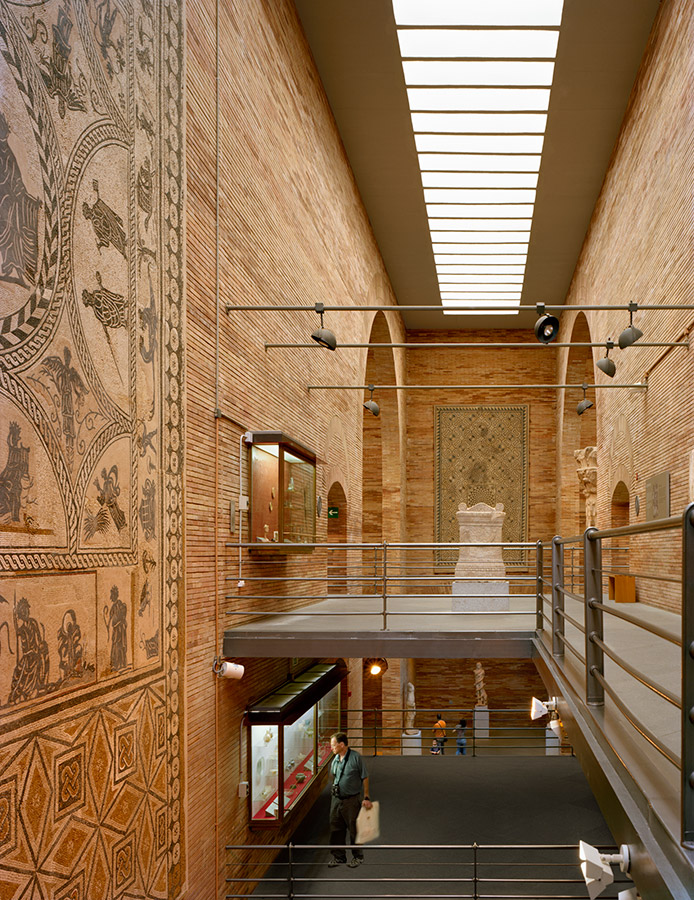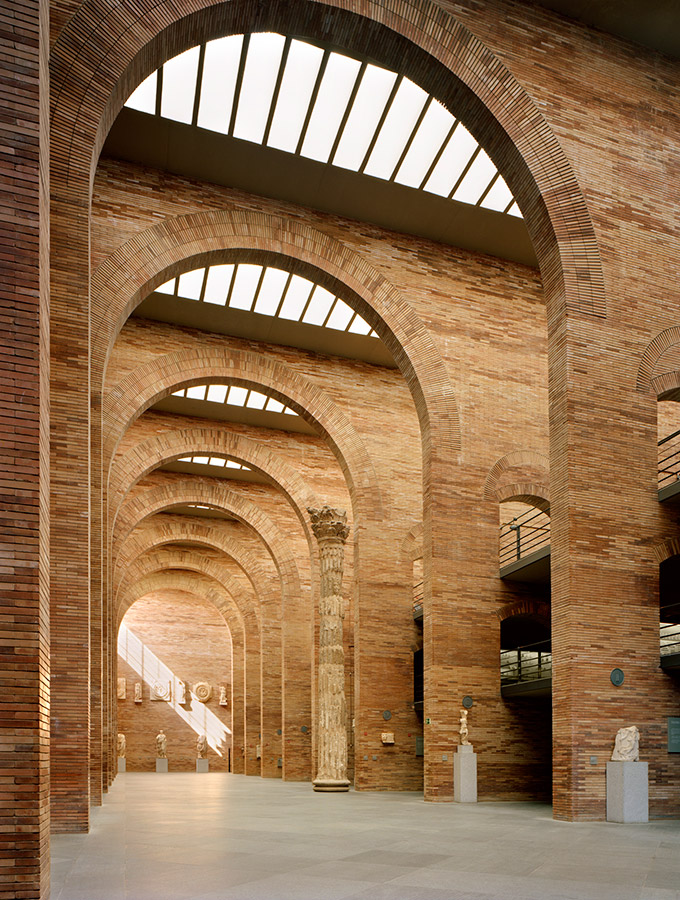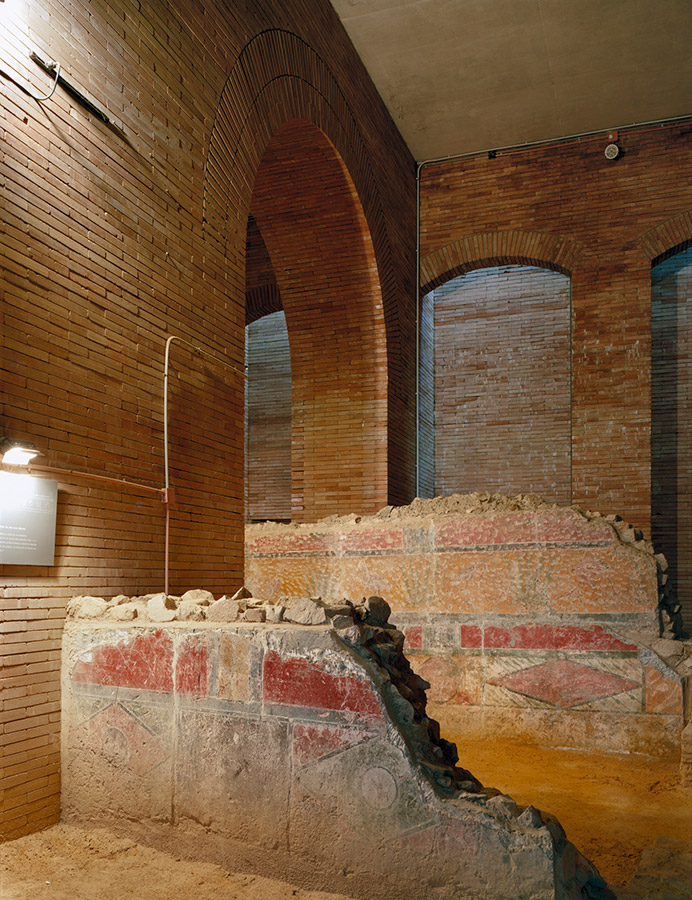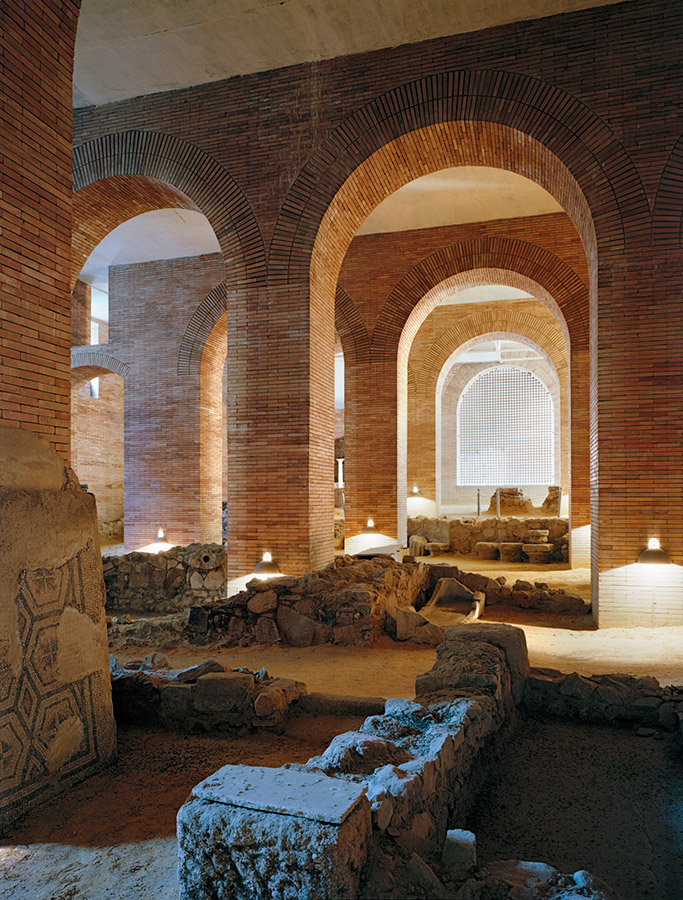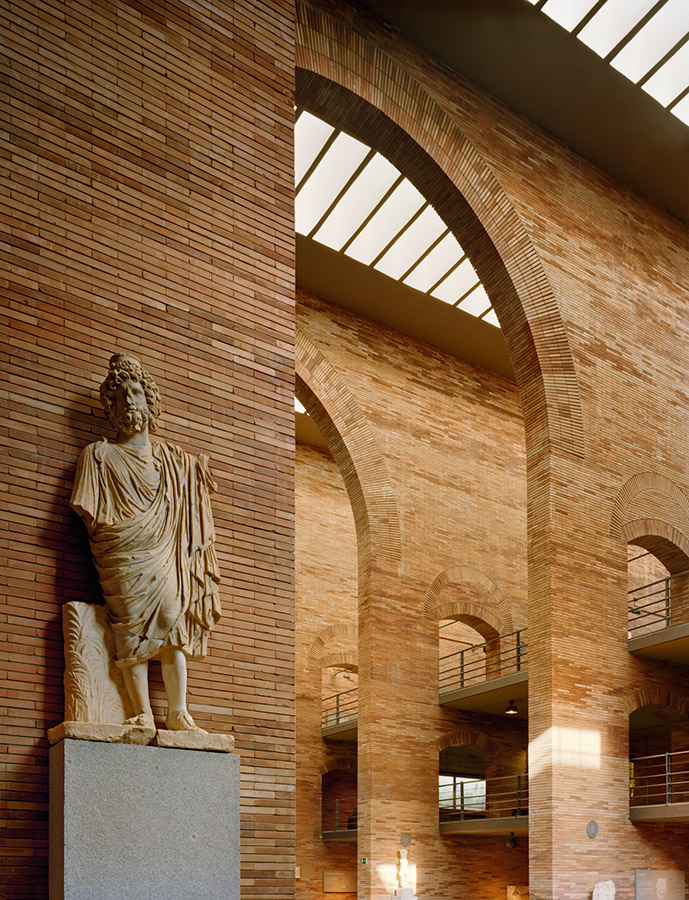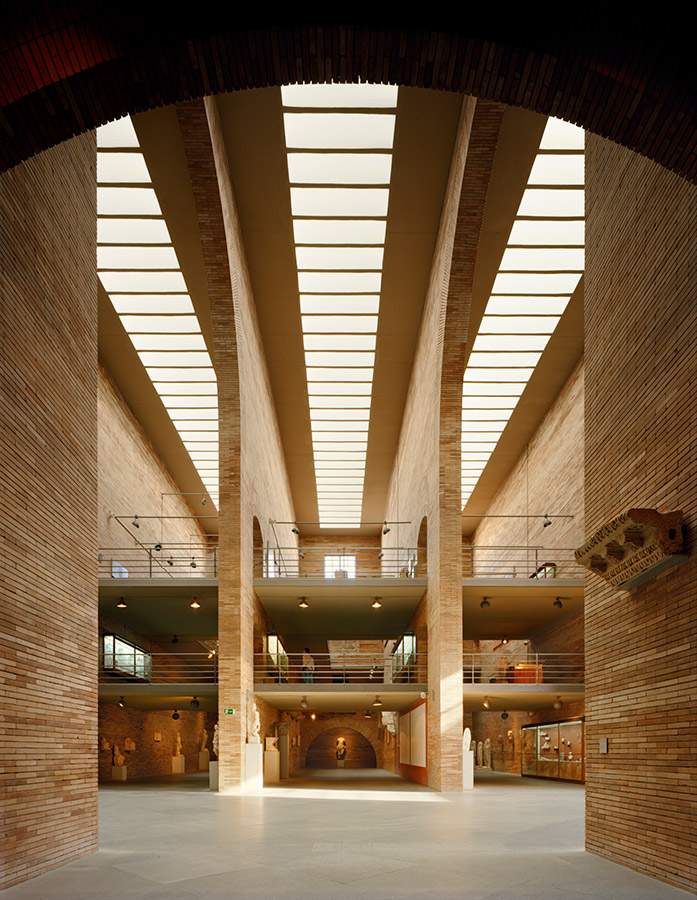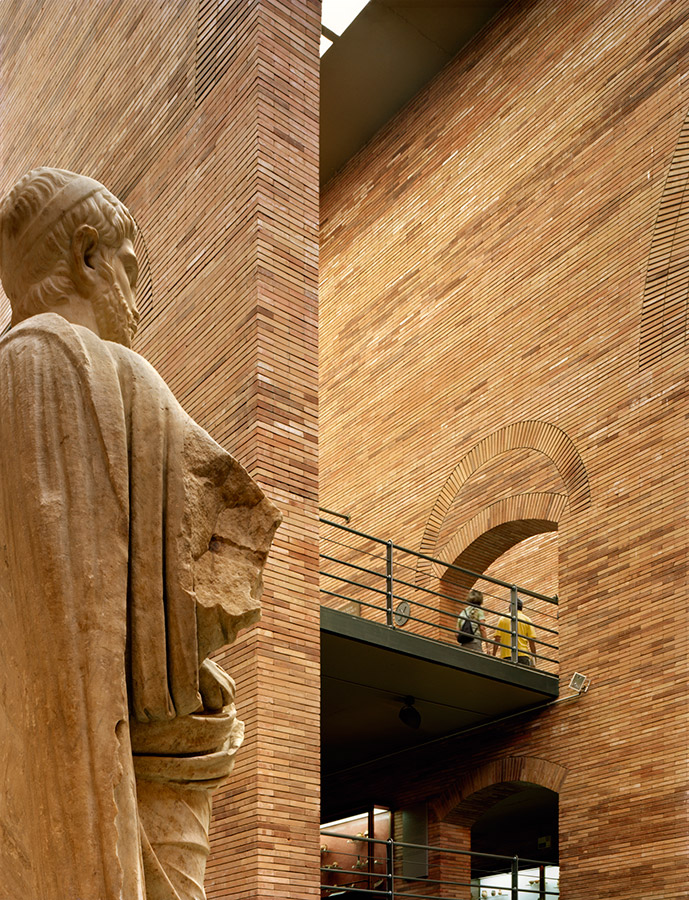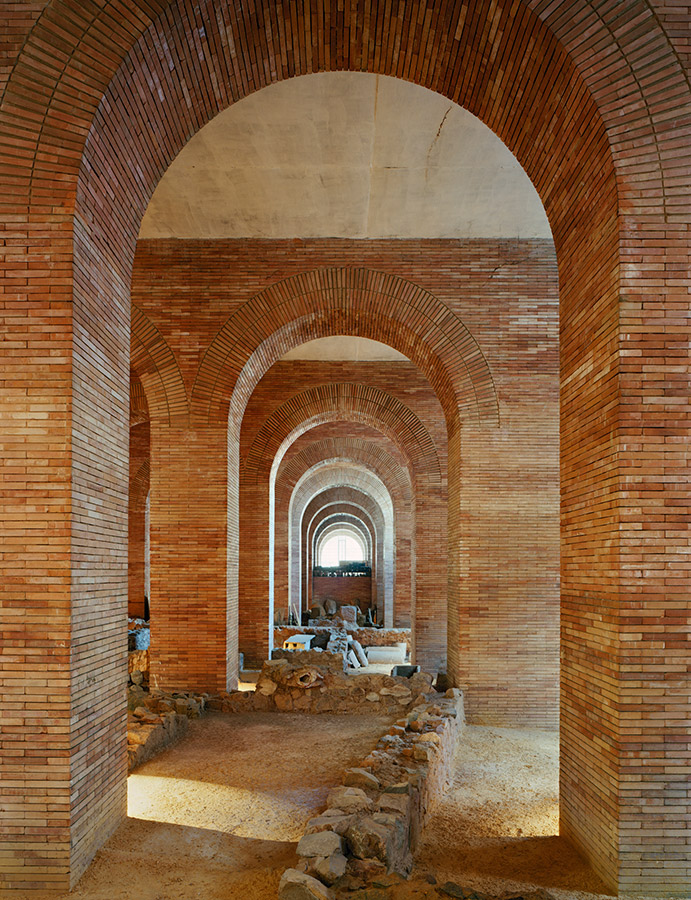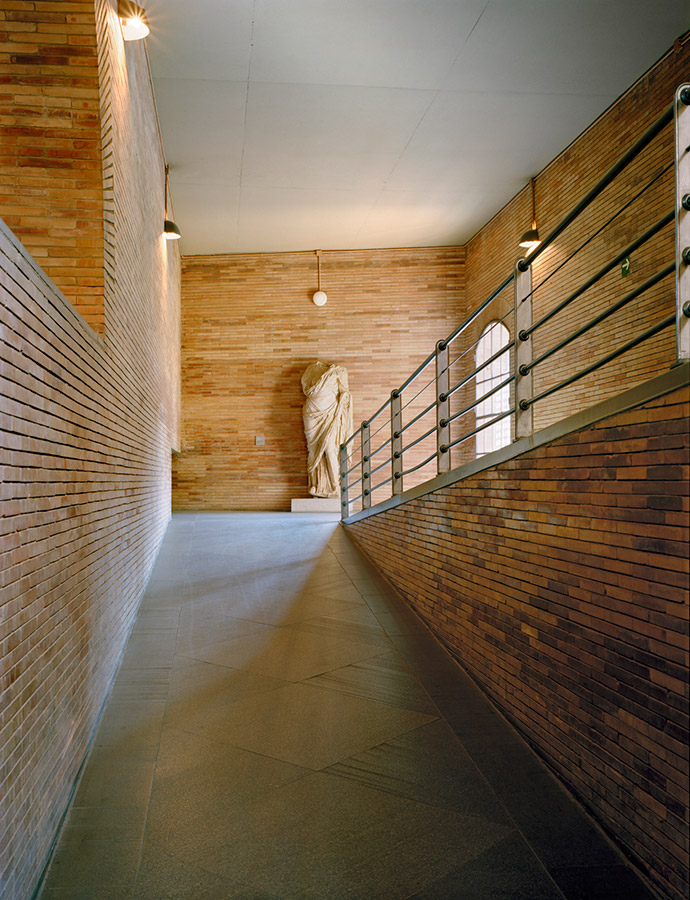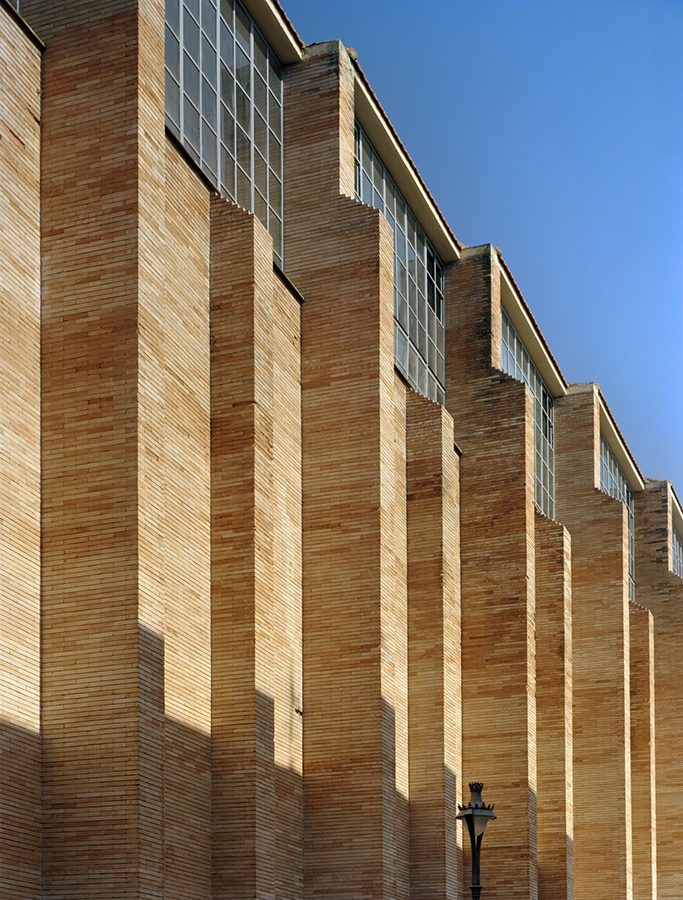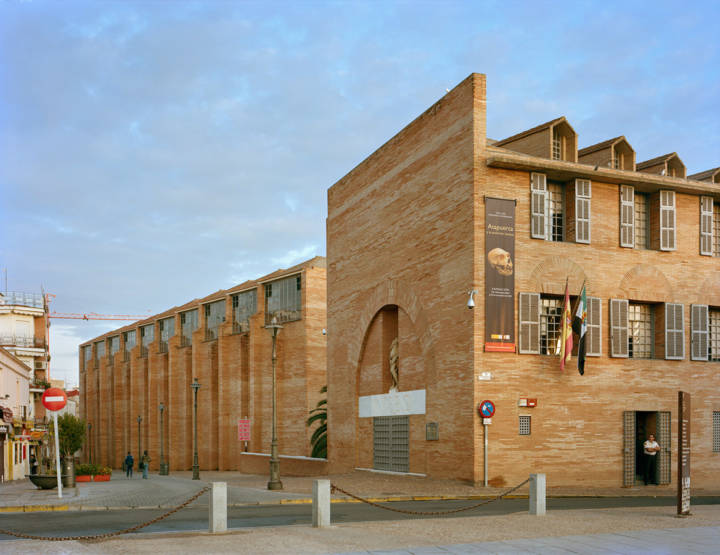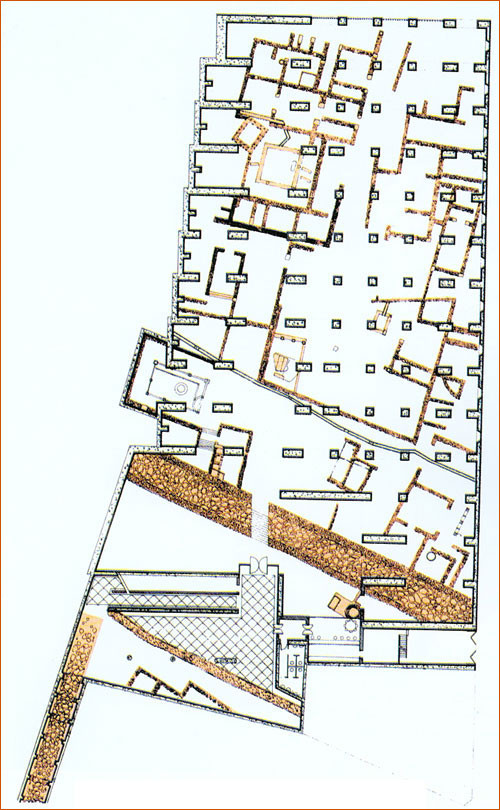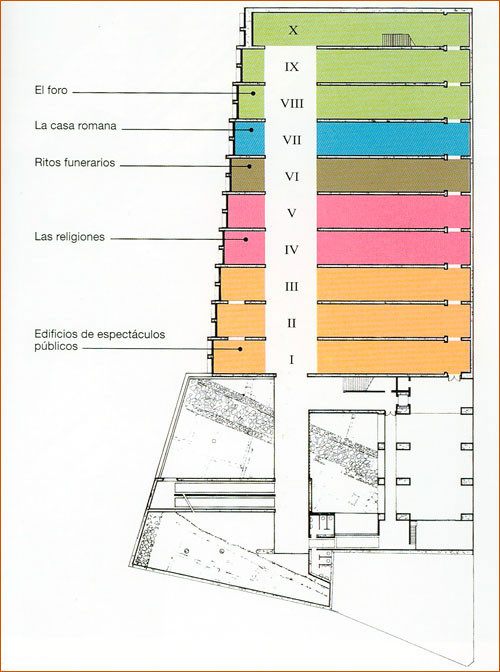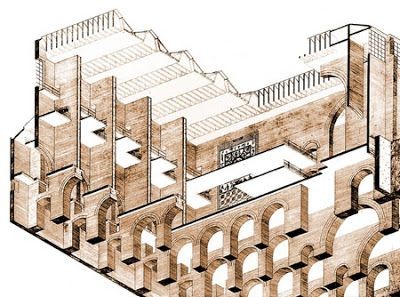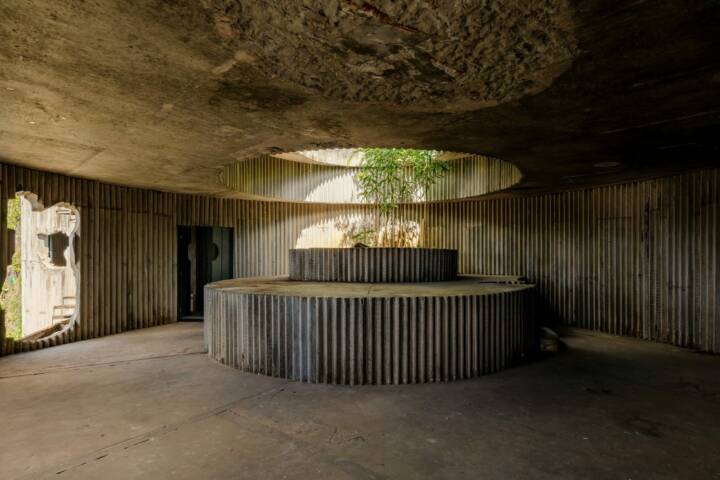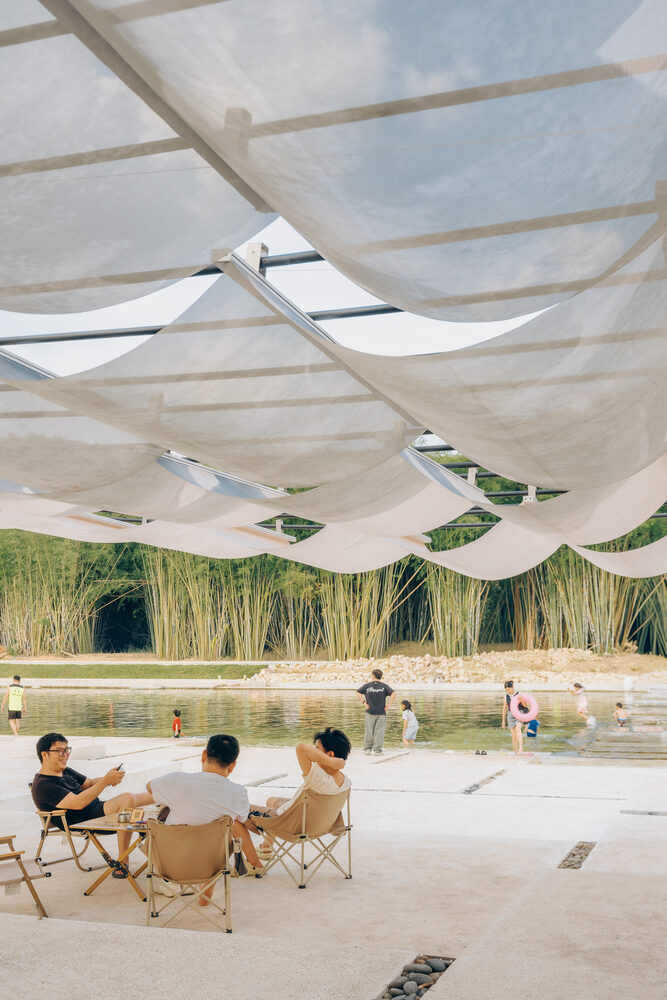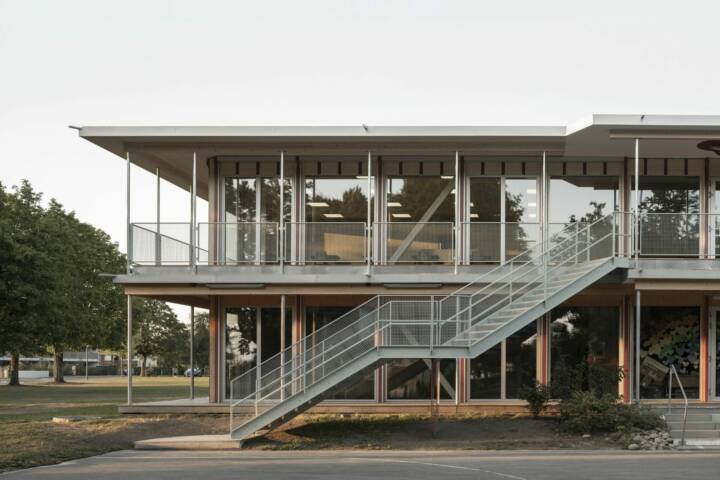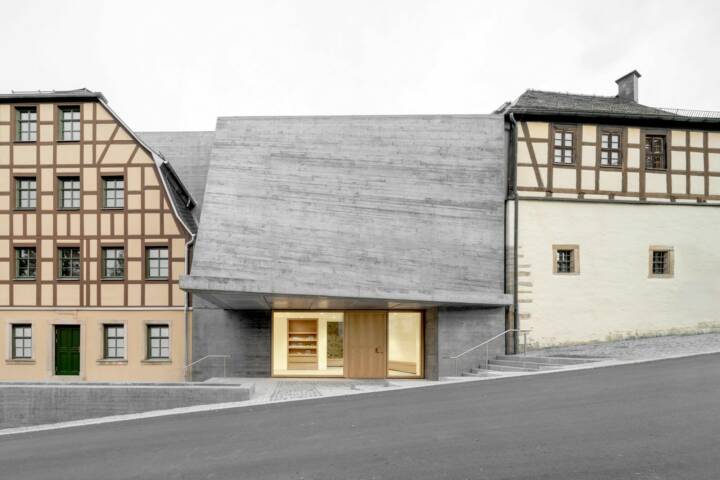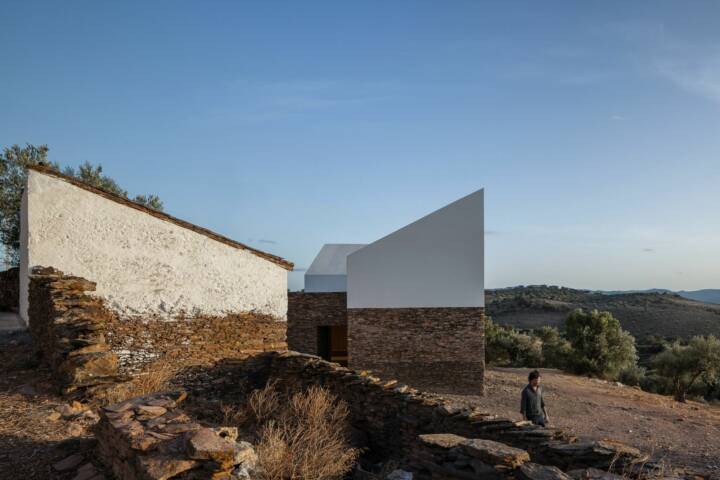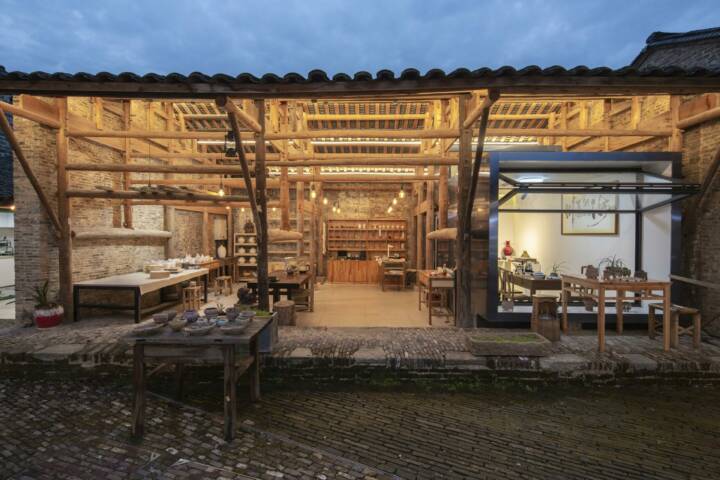Architects: Rafael Moneo Photography: Michael Moran/OTTO Construction Period: 1980-1986 Location: Mérida, Spain
This project came about thanks to the presence of Dionisio Hernández Gil in the Directorate General of Fine Arts presided by Javier Tussell. It all started as a project for a retaining wall on Calle José Ramón Mélida, which was endangered when archeologists excavated a whole block and found what they had expected: aqueducts, peristyles of Roman houses, foundations of Renaissance courtyards, cisterns, sewage pipes, and even the remains of an early Christian church. The task at hand was to build on what had been built on, to build a museum on a site densely occupied by ruins.
Read MoreCloseA direct, immediate, and evident allusion to Roman civilization was practically inevitable, and it was clear that the most respectful way to coexist with the ruins would be by using the same means of construction and techniques that the Romans had. But a dilemma arose between following the orientations defined by the Roman constructions, and acknowledging the outlines of contemporary Merida (perpendicular to the above-mentioned Calle José Ramón Mélida), and the latter prevailed. The new museum came to be the missing link between Roman culture and Mérida today, a symbol not only of Roman Mérida but also of the entire history of the city, in itself this city’s most recent episode. Despite the use of Roman construction methods, the architectural mechanisms are certainly contemporary, and perhaps it is the harmony between the two that makes this museum highly attractive.
Text provided by the architect.
